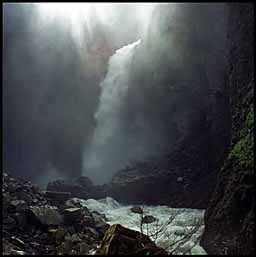

|
Frequently Asked Questionsabout Travels with Samantha by Philip Greenspun |
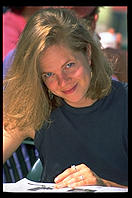 Samantha was a Macintosh PowerBook 170, whose name is explained in Chapter II (as well as in the Dramatis Personae).
Samantha was a Macintosh PowerBook 170, whose name is explained in Chapter II (as well as in the Dramatis Personae).
Samantha served me well for over two years. Apple's rigorous engineering procedures and quality assurance programs resulted in a laptop so rugged that ... every single piece failed. The motherboard ($700). The daughterboard ($400). The power adaptor ($100). The floppy drive ($250). The keyboard ($125). The display ($700). The 40 MB disk drive presumably would have failed but I replaced it with a larger one.
Thousands of dollars shoveled into Apple repair parts were enough to keep Samantha cheerful but then, in May 1995, someone broke into my minivan in Boston and stole a backpack, which contained Samantha. She is presumably running Chop Shop (a parts inventory program for car thieves) right now.
[Note: Samantha gets at least a couple of emailed propositions every week. I'm presuming that these come from guys who haven't carefully read Travels with Samantha and/or from guys who haven't read my guide to picking up babes on the Internet.]
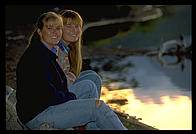
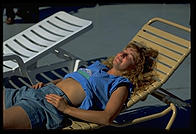
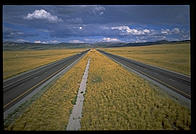 I spent perhaps half an hour every evening working on my diary for the
whole summer, then a few hours every week refining the diary into a
chapter. A few months later, I spent a couple of more days editing
the manuscript, then several weeks converting it to HTML, adding
photographs, feedback scripts, etc. [For what I've learned about Web
publishing, see
Philip and Alex's Guide to Web Publishing
and
Software Engineering for Internet Applications.]
I spent perhaps half an hour every evening working on my diary for the
whole summer, then a few hours every week refining the diary into a
chapter. A few months later, I spent a couple of more days editing
the manuscript, then several weeks converting it to HTML, adding
photographs, feedback scripts, etc. [For what I've learned about Web
publishing, see
Philip and Alex's Guide to Web Publishing
and
Software Engineering for Internet Applications.]
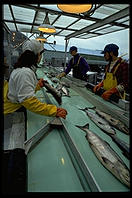 You are reading files from a pizza box Linux machine. To facilitate
discussion, the machine is running the free open-source ArsDigita Community System.
You are reading files from a pizza box Linux machine. To facilitate
discussion, the machine is running the free open-source ArsDigita Community System.
I wrote the original in Microsoft Word and it took me about three days to get all the text and pictures up on the Web, using RTF_to_HTML, Emacs Lisp, HPCDTOPPM, and the PBM tools (all public-domain). Subsequently I went back and redid the photos consistent with my new religion for scanning and personalized presentation.
(They would look a lot better if I had ever had enough time to edit each one individually in PhotoShop; what you see on-line now was batch-converted automatically.)